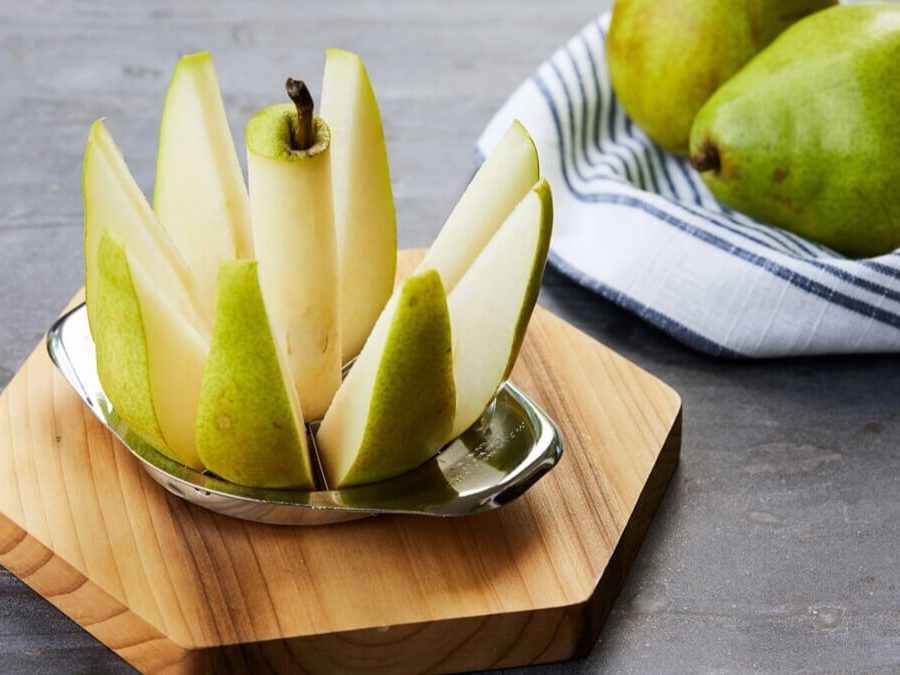Pears and Diabetes
Our bodies need carbohydrates, specifically the sugar glucose, in the bloodstream to provide energy to cells throughout the body. The brain alone requires at least 120 grams of glucose every day!1 Healthful sources of carbohydrates include fruits, vegetables, whole grains, nuts, seeds, beans, and dairy. The system that regulates blood sugar is a fine-tuned machine comprised of various hormones, most notably insulin, that work together to maintain a tight range of available energy in the bloodstream. Sometimes, this system doesn’t work quite the way it should, such as in diabetes, a manageable condition in which too many glucose molecules stay in the blood instead of entering cells. People with diabetes may require insulin and/or medications to ensure glucose is absorbed into tissues that need energy. Since all activities, like breathing, thinking, and walking, require energy, carbohydrates are a necessary nutrient for everyone – even people with diabetes. Just because the body needs some assistance managing glucose doesn’t mean people with diabetes don’t need carbohydrates to breathe, think, and walk!
High blood sugar, or hyperglycemia, damages tissues over time, so it is important to balance carbohydrate intake to prevent blood sugar spikes. Try:
- Focusing on nutrient-dense foods, such as fruits and vegetables, that contain fiber and complex carbohydrates (long chains of glucose called starches).
- Pairing carbohydrates with protein or healthy fats.
- Consuming a steady amount of carbohydrates across the day.
Complex carbohydrates, protein, and healthy fats slow absorption of glucose and, especially when carbohydrates are consumed across the day, may help normalize blood sugar levels and prevent spikes.
Foods like white bread, candy, baked goods, and soda contain sugars that are absorbed very quickly and may lead to sugar spikes. The American Diabetes Association recommends people consume more nutrient-dense, fiber-rich foods, including fruit. Pears contain polyphenols, specifically flavonoids, which are naturally occurring antioxidants that may be beneficial for people with diabetes.3-4 Likewise, pears are one of the fruits highest in fiber, providing 21% of the recommended daily value – an excellent choice for people with diabetes.2 In addition to being tasty, following a regular meal plan that contains pears has many benefits!
1Berg JM, Tymoczko JL, Stryer L. Biochemistry. 5th edition. New York: W H Freeman; 2002. Section 30.2, Each Organ Has a Unique Metabolic Profile. Available from: https://www.ncbi.nlm.nih.gov/books/NBK22436/
2Guo X-f, Yang B, Tang J, Jiang J-J, Li D. Apple and pear consumption and type 2 diabetes mellitus risk: a meta-analysis of prospective cohort studies. Food & function. 2017;8(3):927-934.
3Wedick NM, Pan A, Cassidy A, et al. Dietary flavonoid intakes and risk of type 2 diabetes in US men and women. The American Journal of Clinical Nutrition. 2012;95(4):925-933.
4Barbosa ACL, Sarkar D, Pinto MDS, Ankolekar C, Greene D, Shetty K. Type 2 Diabetes Relevant Bioactive Potential of Freshly Harvested and Long-Term Stored Pears Using in vitro Assay Models. Journal of Food Biochemistry. 2013;37(6):677-686.
Power Up!
Pears and Antioxidants
Pears are packed with powerful antioxidants – bioactive compounds that neutralize free radicals that cause inflammation and cellular damage and may lead to various illnesses, such as cancer, cardiovascular disease, diabetes, and neurodegenerative disorders.
LEARN MOREFlavorful and Fiber-ful!
Everything There is to Know About Pear Nutrition
For only 100 calories in a medium sized pear (about 166 grams), each pear packs in 21% daily value for fiber, 8% Vitamin C, 4% potassium, and a whole host of health benefits.
LEARN MORE